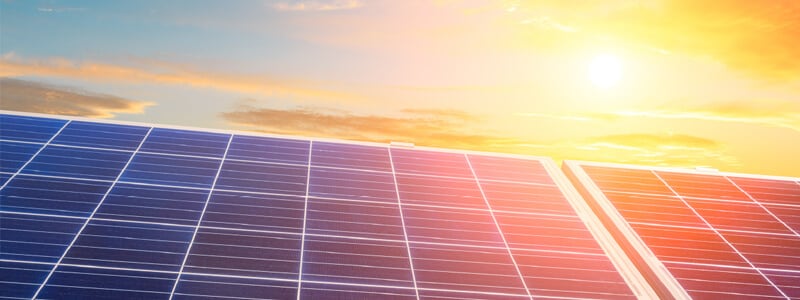The seventh of the United Nations’ Sustainable Development Goals (SDGs) is ‘to substantially increase the share of renewable energy in the global energy mix’. It’s easy to see why alternative energy sources command their own SDG – from fighting global warming to boosting economic development to improving public health, everyone benefits from the transition to renewable energy.
Due to its flexibility and affordability, solar power has fast become the most popular form of renewable power. According to the World Economic Forum, over 115 gigawatts (GW) of solar will be installed across the world in 2020, more than all other generation technologies put together.
What’s more, the coronavirus pandemic has led to a deeper understanding of the ties that bind us all on a global scale. Experts predict that both consumers and organizations will now prioritize renewable energy sources even further.
Solar power is broadly considered to come in two guises: solar thermal and solar photovoltaic (PV) technology. In basic terms, solar thermal energy harnesses heat, whereas solar PV converts sunlight to energy. There are two different types of installations used – individual systems for homes and small communities, or larger concentrated solar power plants that feed into power grids.
Given renewable energy’s increasing prominence, the solar power industry understandably relies heavily on standardization. Standards play an essential part in testing, energy conversion, reflectance or materials properties, fabricating arrays, integrating into the smart grid and assuring workplace safety.
More broadly, standards also have a role to play in helping potential solar users recognize how to integrate solar power into their own energy mix as part of an ongoing environmental and energy management strategy. This, in turn helps the solar industry.
For example, ISO 50001 provides a framework for organizations keen to integrate energy efficiency into their daily operations – reducing energy costs and carbon emissions. A natural progression from ISO 50001 is ISO 14001, which provide guidance on environmental management. It helps businesses evaluate their operations to make then more sustainable.
When it comes to more industry-specific solar standards, the International Electrotechnical Commission (IEC) provides useful leadership and guidance for both manufacturers and installers of solar power units. IEC’s international standards are established through a consensus process involving 20,000 international experts from industry, government and leading testing laboratories, including BSI.
For example, for solar PV modules, the IEC 61215 series of standards covers core elements for testing both thin-film amorphous silicon based photovoltaic and Cadmium Telluride (CdTe) based photovoltaic (PV) modules. Companies should also consider IEC 61730 on requirements for testing and construction and IEC 62108, which specifies the minimum requirements for assessing the product’s capacity for long-term operation in general open-air climates.
In addition, IEC 62947 addresses quality systems for manufacturing PV modules. This recently published standard outlines best practice for product design, manufacturing processes, and the selection and control of materials used in the manufacture of PV modules that have met the requirements of all of the above.
Meanwhile, the BS EN 12977 series of standards focuses on requirements for custom-built solar systems and components, and BS EN 12976-1 provides them for factory-made systems. BS EN 12975 encompasses general requirements for durability, reliability and safety for solar thermal collectors.
Furthermore, BS EN ISO 9806 specifies methods for both laboratory and in situ testing to assess durability, reliability, safety and thermal performance. This standard can be applied to all types of fluid heating solar collectors.
Finally, on both counts, compliance is required when it comes to unit weather-proofing and durability. The BS EN 60068 series of standards for environmental testing of electrical equipment assesses ability to perform and survive under a variety of conditions, including extreme cold and heat.
Solar power’s prominence in the world’s energy matrix is set to grow over the coming years, and standards will play an increasingly important role in shaping the sector. Certification is already an important way to inspire consumer and stakeholder confidence, as we transition to a more sustainable future.



